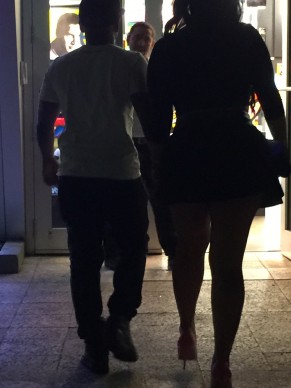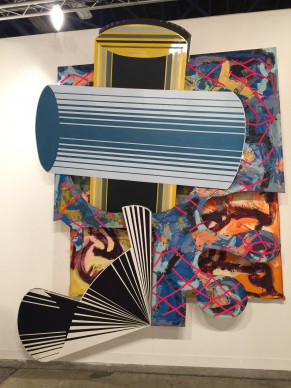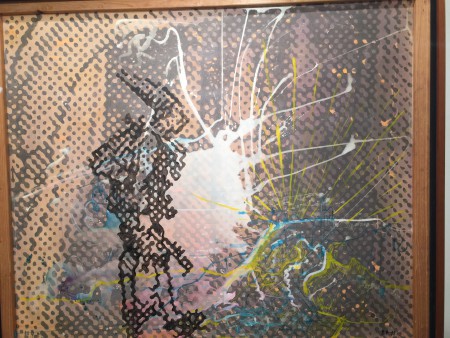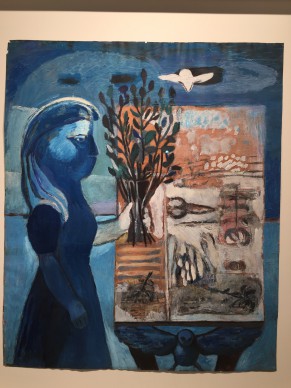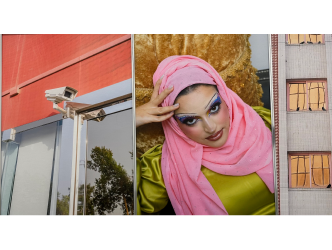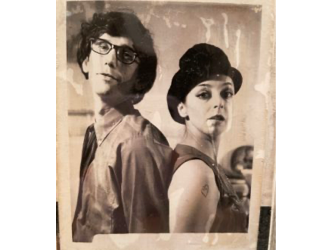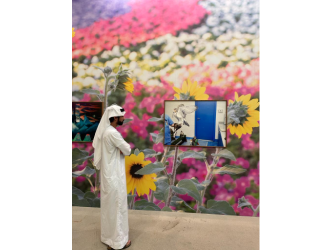It is in this context that ArtBasel Miami has the smarts settle down each year. The idea: To conduct business in a “relaxed,” pleasant, even wacky decor and good weather if possible. This year the Swiss fair is offering high-standard artworks associated with high-standard festivities. At this massive fair, the economic crisis in Latin America and China, the political, human and strategic crisis in France and Europe, geopolitical problems in the Middle East, repeated shootouts in the U.S. and even the mixed results of the last New York auctions do not appear to have affected the desire to buy art in depth: All of this seems to have stayed in the plane coming over. “People know about it. CNN ran a loop of horrible images. But Americans feel they are separate,” a dealer notes.
When the fair opened, everyone was asking questions about the health of the art market. However, after the first few hours, participants were broadcasting their first sales, some of which exceed $1 million. The positioning of ArtBasel Miami Beach (ABMB for the in-crowd) is peculiar: The works tend to be commercially oriented and priced under $10 million, to reach a mostly American and Latin-American public. The Spanish-speaking diaspora has established a solid base in Miami and converted its riches into dollars to avoid economic turbulences in the home country. Naturally, ABMB follows the general trends of the art market: There are fewer young and trendy artists, who are too expensive, and more older ones, even contemporary classics, who are being rediscovered. Which makes for a serious offering.
“Obviously, this is no longer the time to buy anything at any price,” ABMB global head Marc Spiegler acknowledges. Numerous galleries brought what are called “safe values” in modern and contemporary art, which makes for a heavy but reassuring investment for the planet’s ultra-rich, whose most important concern is to invest their liquid assets. And so, at the booth of one of New York’s great dealers, Acquavella, you can find, side by side, an Andy Warhol painting from 1963 from the “Disasters” series, priced at $15 million, and a figurative canvas by Gerhard Richter, from 1965, with a $7.5 million price tag.
Elsewhere, at the booth of another pillar of the New York art market, Mnuchin, Sukanya Rajaratnam, Robert Mnuchin’s sidekick, has selected, among other things, a spectacular 1978 canvas by Frank Stella (born 1936)—a pioneer of American art currently the subject of a retrospective at New York’s new Whitney Museum—offered at $2.2 million. “I think there will be corrections in market prices,” Rajaratnam opines. “Things can’t go on with this kind of exuberance. The first field affected by this will be contemporary art, where new names will be resold with significant appreciations. But on the other hand, a Picasso or a Matisse kept safe and sound is an excellent way to secure your money.” At the fair, Gordon Veneklasen, director of the New York- and London-based Michael Werner gallery, is showing a 1988 painting, painted on both sides, by one of the great contemporary German painters, Sigmar Polke (1941–2010). It’s offered for $2.8 million. “We had already presented it at the gallery some 30 years ago. Its price was less than $100,000, for sure. Works that are rare and of great quality see their value increase progressively. Every new fair we attend, we make contact with about ten new collectors. As far as the crisis is concerned, I won’t be breaking news when I say that it affects normal people, not art buyers at this price level.”
Swiss gallery Gmurszynska took ABMB as an opportunity to celebrate its 50 years in business by showing a large quantity of “classic” works, from Miro and Wifredo Lam (the subject of a current restrospective at the Pompidou Center) to Francis Bacon and American artist Robert Motherwell, whose immense abstract canvas from 1989 is priced at $7 million – the most expensive work Gmurszynska is offering in Miami. Director Mathias Rastorfer says it like it is: “There are too many people who don’t know the art market, who are not committed to the field and who think it’s easy to make money there. The current economic context will take care of eliminating them. Our field, the first half of the 20th century, is stable and reassuring.”
At the booth of Karsten Greve, another German dealer settled in Paris, visitors can see a surprising Louise Bourgeois canvas from 1949 that is Surrealist in spirit, on offer for $1.3 million. Almine Rech is showing a rather good 4.5-meter (14.7-foot) long abstract canvas from 1994 by an artist who has better success making movies, Julian Schnabel, on offer for $600,000. Because of his retrospective at New York’s Whitney, Frank Stella, the grandfather of American Minimalism, is present at many booths, such as Marian Boesky’s, with spectacular giant reliefs with shapes in aluminum and colored fiberglass included in the canvas in 1983 and ’84. Its length exceeds 2.5 meters (8.2 feet) and it is priced at $1.2 million. A simple visit to the Whitney will demonstrate Stella’s importance. A number of artists in their forties (Sterling Ruby can be used as an example), promoted by such galleries as Gagosian, see their works offered for the same price (or almost) as those of Stella. What does this mean? That the art market is not in its right mind.
Speaking of Minimalism, one of the fair’s standouts is Spanish gallery Elvira Gonzalez’s booth, which is entirely devoted to Robert Mangold, with works conceived between 1966 and 2006 and priced between $250,000 to $1.3 million euros. Traces of compositions delineated by lines, touches of color, irregular shapes: Mangold is about elegance, a concept associated with pleasure derived from color. Is his work going to sell well in Miami, where bling is king?
Indeed: In the Design District, dealer Jeffrey Deitch, allied this time with one of his historic competitors, global gallerist Larry Gagosian, has organized an exhibition about figuration in painting. Colors and shapes are everywhere. The entire Moore Building is taken over by canvases and a few sculptures, not all of them interesting. There are 60 artists and a few exceptional works, such as the portrait of his spouse done by the excellent painter John Currin. At the exhibition’s entrance, a hyperrealistic wax sculpture by Urs Fisher represents Mr. Chow, a friend of Andy Warhol in his time. Mr. Chow, who also owns a restaurant in Miami, made the trip to light his lookalike candle.
The next evening, he was throwing a party at his own place to announce that the Warhol Museum in Pittsburgh will soon devote one of its exhibitions to him. With kitschy Christmas music in the background, all of Miami’s beautiful people were there, drinking Champagne. But the most memorable party this week was more apocalyptic than that. The day before the fair opened, Gmurzynska was celebrating its 50 years in business with Sylvester Stallone (also a painter, a bad one) and Leonardo DiCaprio (also a collector, but of what?). Naked female dancers on swinging hoops, girls fitted inside tables with lampshades on their heads…
You had a hard time believing it was true. And all this was taking place in Gianni Versace’s palazzo, decorated antiquity-style—the very place in front of which the couturier was assassinated, on the beach. Still.
The very next day, the very same gallery, Gmurzynska, was unveiling its booth with an exhibition curated by Germano Celant, the excellent art historian.
One of my favorite booths at the fair was that of Francis N. Naumann, a Surrealism and Dada specialist, which is showing, among other things, the kitschy, forgotten charms of Marcel Duchamp’s sister Suzanne. Delicate floral watercolors selling for $7,000—a taste for willfully kitschy realism.
ArtBasel Miami Beach is a mixed fair, a cocktail made of millions of dollars, art history and a taste for parties: heady, for sure, but not explosive. Why not?
Donating=Supporting

Support independent news on art.
Your contribution : Make a monthly commitment to support JBH Reports or a one off contribution as and when you feel like it. Choose the option that suits you best.
Need to cancel a recurring donation? Please go here.
The donation is considered to be a subscription for a fee set by the donor and for a duration also set by the donor.

